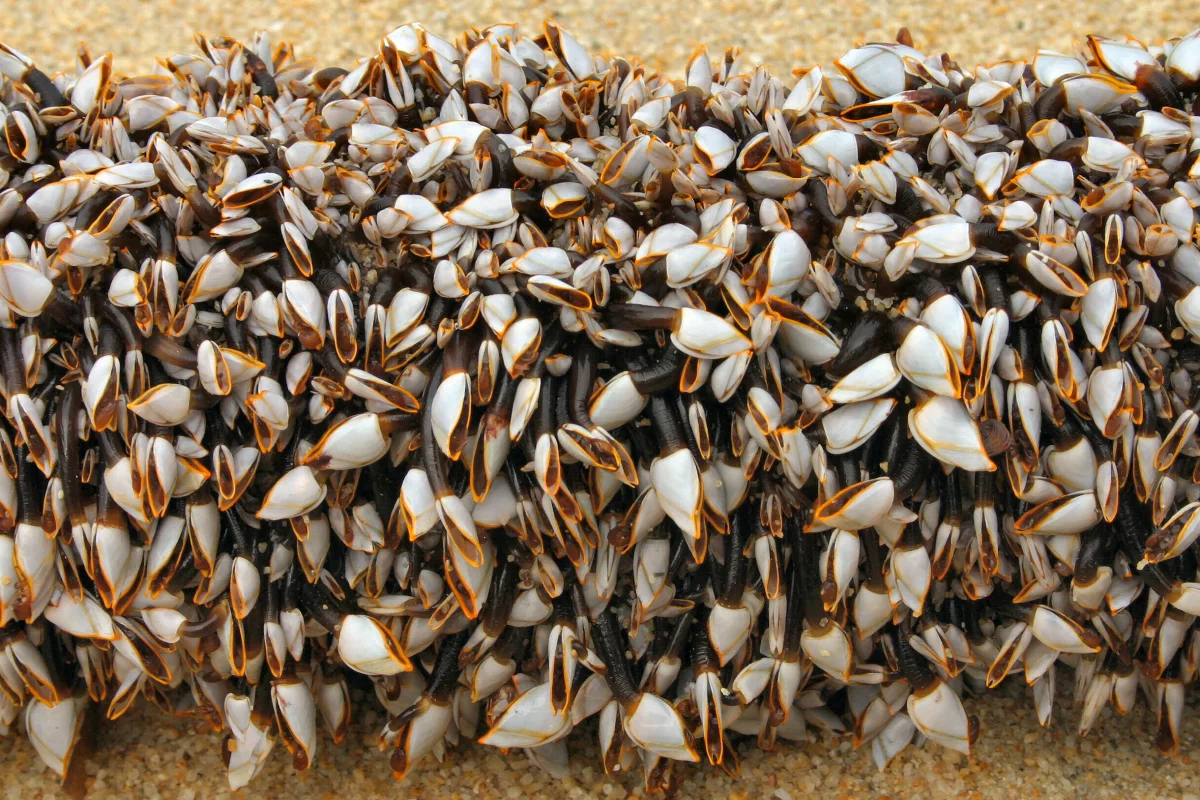When it's determined that a boater is officially missing at sea, it helps very much to know when and where their vessel sank. According to new research, barnacles growing on flotsam could provide that information.
Unlike other species of goose barnacles that attach themselves to rocks, Lepas anserifera are found almost exclusively on objects which have been floating in the ocean. The crustaceans live in temperate and tropical seas throughout the world, and commonly end up covering a variety of items that wash up on beaches.
Based on analyses of free-floating debris, scientists from Australia's University of New South Wales were recently able to establish the rate at which the barnacles colonize objects, and the rate at which they grow. Therefore, if an item suspected of being from a missing vessel is found along the shore, counting and measuring the Lepas on it should provide a reliable estimate of the minimum time it has been adrift.
Additionally, the researchers found that by analyzing the oxygen isotopes which have accumulated in the barnacles' shells, it's possible to establish a rough record of the different sea surface temperatures through which they've drifted. So, by consulting satellite records of sea surface temperatures in the region, officials could conceivably plot out the barnacles' drift path – the start of that path would be close to the location at which the vessel sank.
Plans now call for a larger-scale study to be conducted in other oceanic regions.
A paper on the research, which is being led by Thomas Mesaglio, was recently published in the journal Marine Biology.
Source: University of New South Wales




